Ever wondered why Durham is called, ‘Land of the Prince Bishops’? We’re delving into the fascinating history of the Prince Bishops, to uncover their incredible story and the lasting legacy they have left on the county.
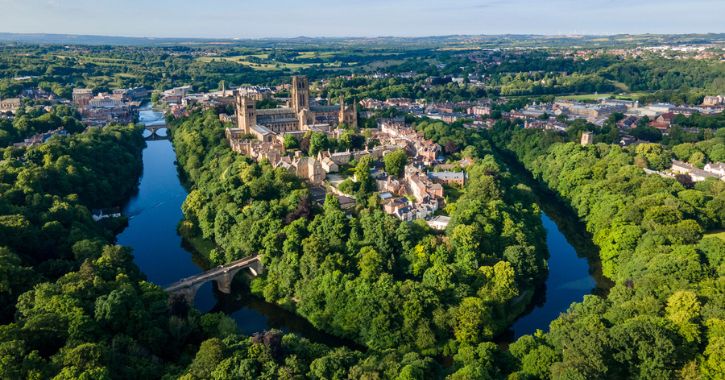
Who were the Prince Bishops?
When William the Conqueror came to the throne in medieval times, ensuring stability in the North was very challenging. In 1075 the King created the Palatine of Durham and its ‘Prince Bishops of Durham’ to protect the north from invading Scots.
The bishops were appointed by the king, but they saw themselves as defenders of the territory, privileges, and jurisdiction that belonged symbolically to Saint Cuthbert. Although they were not styled ‘Prince-Bishops’ until the 19th century, the medieval bishops of Durham exercised powers normally held by the King, making them the most powerful men in England - the original ‘Kings of the North’.
They had the ability to not only mint their own coins and levy taxes but also raise an army and establish their own legal court. Because of these princely powers the area that they governed was known as the ‘County Palatine’. The bishops kept their secular powers until 1836.
“There are two kings in England, namely, the lord King of England wearing a crown…and the lord bishop of Durham wearing a mitre in place of a crown…” Quote from Master William de St Botolph, steward of the bishopric of Durham, August 1302

Durham City
Bishop William Walcher (1071-1080)
The first ‘Prince Bishop’ appointed by William the Conqueror, who held the position until his death in 1080. He built Durham Castle in the Norman ‘motte and bailey’ style. During that time, Durham Castle has been the backdrop to rebellions, civil wars, political upheaval, and religious reforms. Yet the Castle itself is the only Norman keep in England that has never been taken by force, and remained in the hands of successive Bishops for almost 750 years.
Despite his importance, Walcher was a weak leader. In 1079 he was unable to prevent a Scottish invasion, which led to extensive plundering and tremendous damage across the region. The invasion resulted in the people of Northumbria rising up against Bishop Walcher and killing him. He is buried under the floor of the Chapter House in Durham Cathedral.
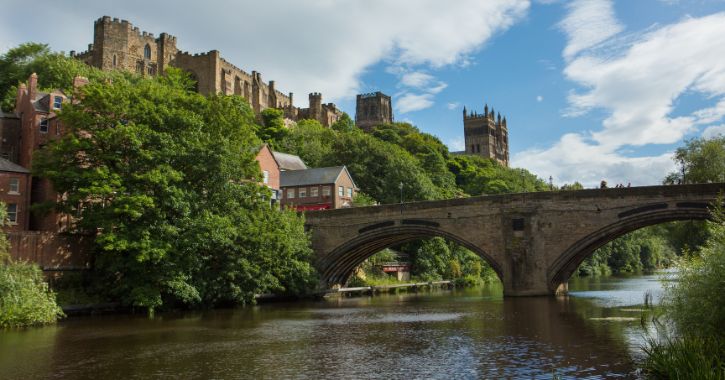
Bishop Ranulf Flambard (1099-1128)
Did you know that one of Durham’s favourite photo spots is connected to Bishop Flambard? Under his instruction, Durham’s first stone bridge was built around 1120 – the original Framwellgate Bridge. You can take a pause on the newer bridge for fantastic views of Durham City!
Flambard was a controversial figure, who was seen as greedy but also a great builder. He was the chief financial administrator for William II. The King was notorious for imposing large taxes to finance his campaigns abroad, and the Bishop was an easy person to blame. When his son, King Henry I inherited the throne, he accused Bishop Flambard of extortion. He became the first prisoner of the Tower of London and the first escapee! It’s said he hid rope in a barrel of wine and gave wine to the guards to get them drunk!
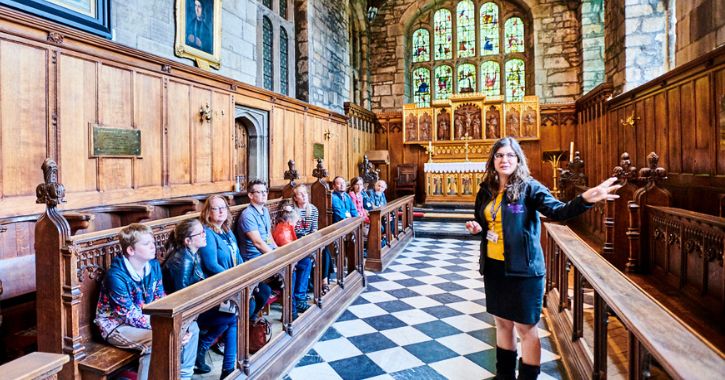
Bishop Cuthbert Tunstall (1530-1559)
On a tour of Durham Castle you can find out about the fascinating life of Cuthbert Tunstall, the son of a northern knight called Sir Thomas Tunstall. Tunstall was a high-profile Catholic who saw the reign of five Tudor monarchs! To this day you can see spot his family’s coat of arms in the castle’s courtyard. The three combs on the crest represent a family ancestor, who was the barber of William the Conqueror!
Inside the castle, you can wander around the intricate Tunstall Chapel and the Tunstall Gallery, named after this Bishop.

Bishop Thomas Hatfield (1345 - 1381)
Thomas Hatfield had the magnificent Bishops’ Throne installed in Durham Cathedral. Legend has it that he wanted the tallest throne in Christendom, and sent messengers across Europe to measure the height of all the other bishops’ thrones – including the Pope’s in Rome. The Pope was so furious with Hatfield that he had a thick cushion put on his throne so he would sit taller again! Hatfield’s tomb can be seen underneath the Cathedral Quire.
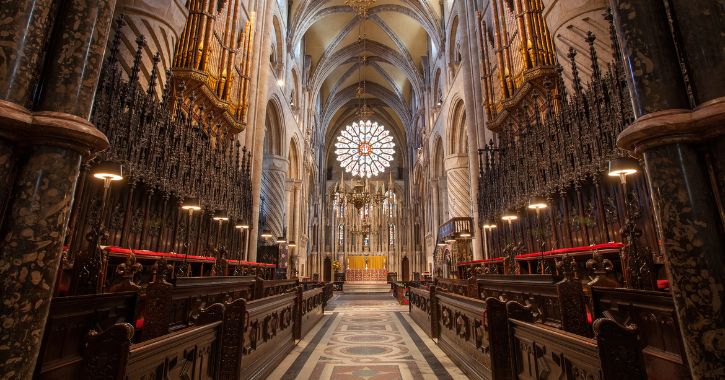
Bishop John Cosin (1660 – 1672)
At Durham Castle you can also see Bishop Cosin’s influence. He undertook a major refurbishment of the place and one of his incredible additions was the Black Stairs. Made of oak, it was designed as a flying staircase, meaning it had no vertical supports and its weight was entirely supported by the walls! Not surprisingly, the staircase started tilting towards the centre and wooden columns were added. The steps were deliberately shallow and wide, reflecting the Bishop’s flamboyant nature. With low steps combined with long robes, it gave Cosin the appearance of floating down the stairs.
At nearby Palace Green Library you can step inside Cosin’s Library – the earliest surviving public library in the North East! It was founded by the man himself in 1669 from his private collection and is still in its original building.
Bishop Cosin also restored all the woodwork in the Cathedral that had been destroyed during the English Civil War, and today you can still see his magnificent choir stalls and font canopy in the Cathedral.
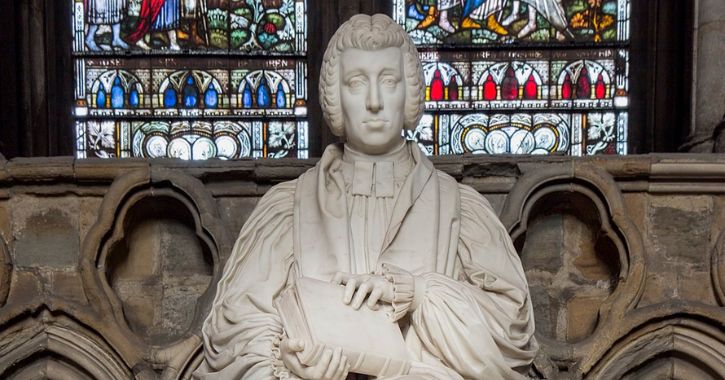
Bishop William Van Mildert (1826-1836)
On the north side of the Chapel of the Nine Alters in Durham Cathedral you can see a marble statue of Bishop Van Mildert, who was the last Bishop to have power as a Palatinate Prince-Bishop.
He hosted one of the final grand ceremonial events at Durham Castle in October 1827. Notable guests at the feast in the Great Hall included the Duke of Wellington and author Sir Walter Scott. The Bishop’s major legacy is founding Durham University in 1832, he gifted Durham Castle and several buildings on Palace Green to them to help establish the University.

Bishop Auckland
Auckland Palace was once the residence of Prince Bishops, and is one of the best-preserved Bishop’s Palaces in the whole of Europe!
Positioned high above the meandering River Wear in the town of Bishop Auckland, Auckland Palace is a remarkable symbol of faith and power. Today you can walk in the footsteps of the Prince Bishops as you journey through the castle’s many remarkable rooms, including private apartments, Throne Room and St Peter’s Chapel.
Construction of Auckland Palace began around 1183, while Hugh de Puiset was Bishop of Durham, and was completed sometime in the early 1200s. During the English Civil War the castle was captured by Parliamentarians, and was heavily damaged, with much of it blown up including the original medieval chapel. After the Restoration of the Monarchy, Bishop Cosin rebuilt the castle and turned the banqueting hall into the chapel which you can visit today, and still remains the largest private chapel in Europe.
After Bishop Van Mildert gave Durham Castle to Durham University in 1836, Auckland Palace became the Bishops’ main residence. A status it retained until in 2012 when it was sold to the Auckland Castle Trust. However, the castle is still home to the present Bishop’s offices.

Bishop Richard Trevor (1752 to 1771)
Bishop Trevor was a strong supporter of the Jewish community and was a sponsor of the Jewish Naturalisation Act of 1753, which would give Jewish immigrants the same rights as those born in England. However, the act was repealed in 1755. To show his sympathy for the Jews, the Bishop bought twelve of the thirteen magnificent paintings of Jacob and His Twelve Sons by Francisco de Zurbarán. The price was just £124 but the collection is now worth £15 million! You can admire them in The Long Dining Room of Auckland Palace. There is a facsimile of Benjamin and the original ‘missing’ son is currently on display at The Spanish Gallery.
From Durham City to Bishop Auckland, there are many amazing locations across the county you can continue to uncover the fascinating stories of the Prince Bishops of Durham.
Related
Comments
Comments are disabled for this post.



 to add an item to your Itinerary basket.
to add an item to your Itinerary basket.
.png)





